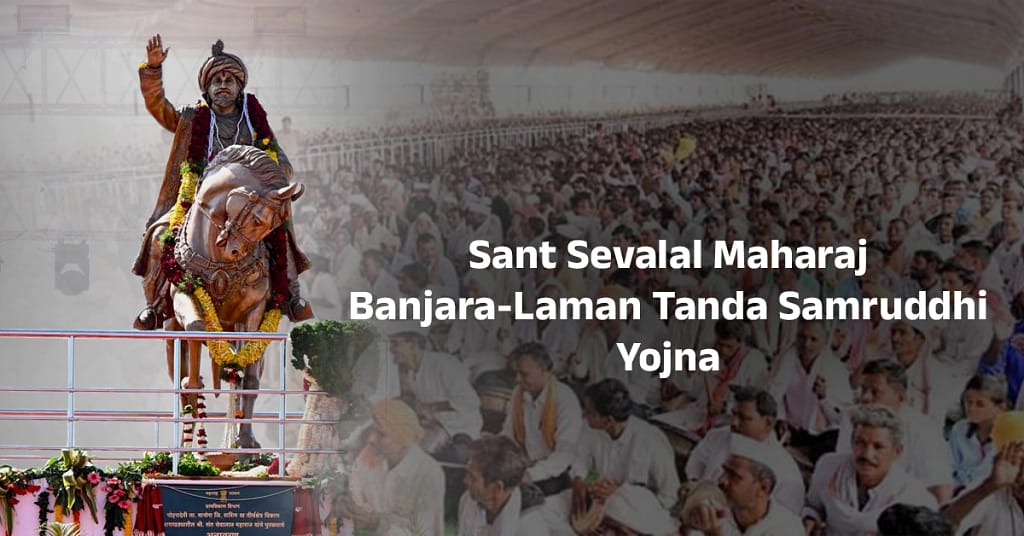The nomadic or semi-nomadic communities of Banjaras, also called ‘Lamans’ among their many names, have been an integral part of Indian culture and history since time immemorial. Earlier, they would migrate from one place to another in caravans called ‘Tandas.’ In 2024, the Mahayuti government 1.0 took an important step towards social equality and development for the Banjara communities by approving the Sant Sevalal Maharaj Banjara / Laman Tanda Samruddhi Yojana (Tanda Development Scheme). Besides ensuring social justice for the Banjaras, this scheme addressed several developmental aspects for the Tandas, providing basic amenities like water supply, electricity, roads, education, healthcare, etc. Under this scheme, the Devendra Fadnavis government recently approved development works worth Rs 139.35 crore for 1,348 Tandas (settlements or villages). Rs 69.68 crore worth of works are currently underway in 16 districts
The Sant Sevalal Maharaj Banjara Yojana or Laman Tanda Samruddhi Yojana (Sant Sevalal Maharaj Yojana) is a Banjara community development scheme that reflects the Mahayuti government’s focus on community developments and social harmony. The program is a 100 percent state-sponsored scheme, which was approved in the state cabinet meeting held on February 5, 2024. Under this scheme, a minimum of Rs 30 lakh will be spent for each Tanda to provide them with basic living amenities. In the financial year 2024-25, works worth Rs 139.35 crore were approved to provide basic services and facilities to 1,348 Tandas in the state.
Mahayuti government’s historic reform – Revenue village status for Tandas
The settlements of Banjara/Laman community are often scattered, and due to the lack of a clear record of their area of residence, they were facing difficulties in availing the benefits of many basic facilities and schemes. Considering this, a bespoke Mahayuti government scheme has been designed to give ‘rehabilitated village status’ to Banjara settlements, which have a population of more than 350 and located 2 km. away from the nearest Tanda, as per Section 4(1) of the Maharashtra Land Revenue Act, 1966. Also, special committees have been formed in each district under the chairmanship of the chief executive officer of the Zilla Parishad for the implementation of the said scheme. Each of these committees is made up of administrative representatives of various departments, two non-governmental Banjara community members nominated by the Zilla Parishad Chairman, and other specially invited members. Through this committee, emphasis has been placed on learning the needs of the people living in Tanda and providing them with facilities.
Changes in old rules; Paving the way for development
As per the government decision of the Rural Development Department dated February 12, 2004, the minimum conditions for creating a Gram Panchayat in a settlement were that each settlement would have at least a population of 1000 people and a minimum 3 km distance from the nearest village. However, the Mahayuti government, showing flexibility, relaxed the condition of 3 km distance, which made it possible to give the status of Gram Panchayat and Revenue Village to more Tandas. Meanwhile, the state government has approved a fund of Rs 500 crore to provide necessary facilities to the Banjara tribes living in Tandas. This fund is reserved only for Tanda development, with an allocation of Rs 30 lakh for each Tanda to build roads, health centers, Anganwadis schools, community temples, drinking water facilities, etc.
The Laman Tanda development scheme is proving useful for the Banjara communities located in Vidarbha, Marathwada, North Maharashtra as well as West Maharashtra. The Mahayuti government has taken a policy-level decision keeping in mind the actual problems faced by the Banjaras or Laman and has also started its effective implementation. As said earlier, this scheme, besides uplifting their living conditions and supporting their livelihood, will ensure legal support to them. So that, slowly but surely the Banjara communities will come into the mainstream of society.

